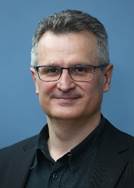
应机械结构强度与振动国家重点实验室邀请,爱尔兰国立高威大学 Michel Destrade教授来访我院并作学术报告。
报告时间:2018年12月10日 上午10:00
报告地点:航天航空学院第二会议室
报告题目:Elastic waves in soft matter
个人介绍:
Professor Michel Destrade is Chair of Applied Mathematics at NUI Galway; Adjunct Professor at Zhejiang University and at University College Dublin; Directeur de Recherche at the French National Centre for Scientific Research (on leave) and a member of the International Brain Mechanics and Trauma Lab at Oxford University. He is Associate Editor of many prestigious international journals, Reviews Editor for Proceedings of the Royal Society A and Contributing Editor for International Journal of Non-Linear Mechanics.
His research interests include nonlinear electro-elasticity, acousto-elasticity theory, nonlinear wave theory and their applications to soft tissues and soft dielectrics. He has authored 3 book chapters and 120+ publications in high-impact international journals with 60+ international collaborators. His h-index is 32 and his citation count 3,200+ (Google Scholar).
报告内容:
Biological soft tissues and soft gels are difficult to study and model mathematically. Bioengineers often see tissues as engineering materials and try to evaluate their mechanical properties by relying on standard testing protocols, such as tensile testing, simple shear, torsion, etc. These processes are destructive and change the mechanical properties of living tissues considerably
To test tissues non-destructively and non-invasively, we can rely on the propagation of elastic waves. Just like a piano tuner can infer some information simply by tapping a cord while changing its state of stress, we can study the influence of pre-stress on the speed of elastic waves traveling in a soft solid. This idea forms the basis of the theory of acousto-elasticity, which has been used successfully in the past for "hard" elastic solids such as rocks and metals.
With this talk, we explore its extension to "soft" elastic solids, which can be subjected to large deformations in service. We look at theoretical, numerical, and experimental results, generated in particular on gels, human skin, and porcine brain matter.
